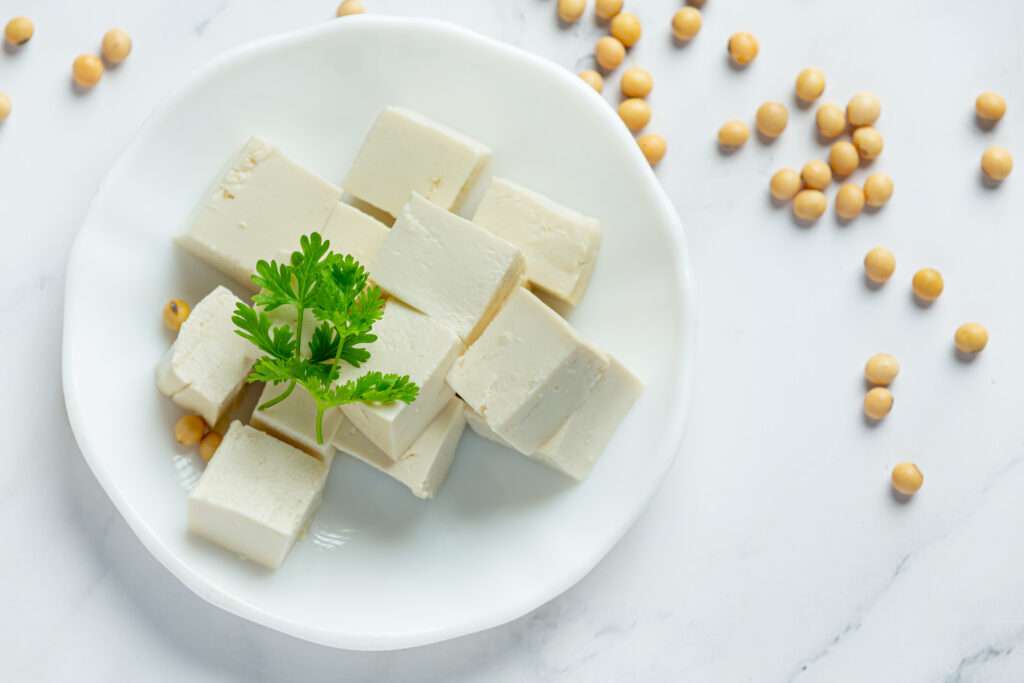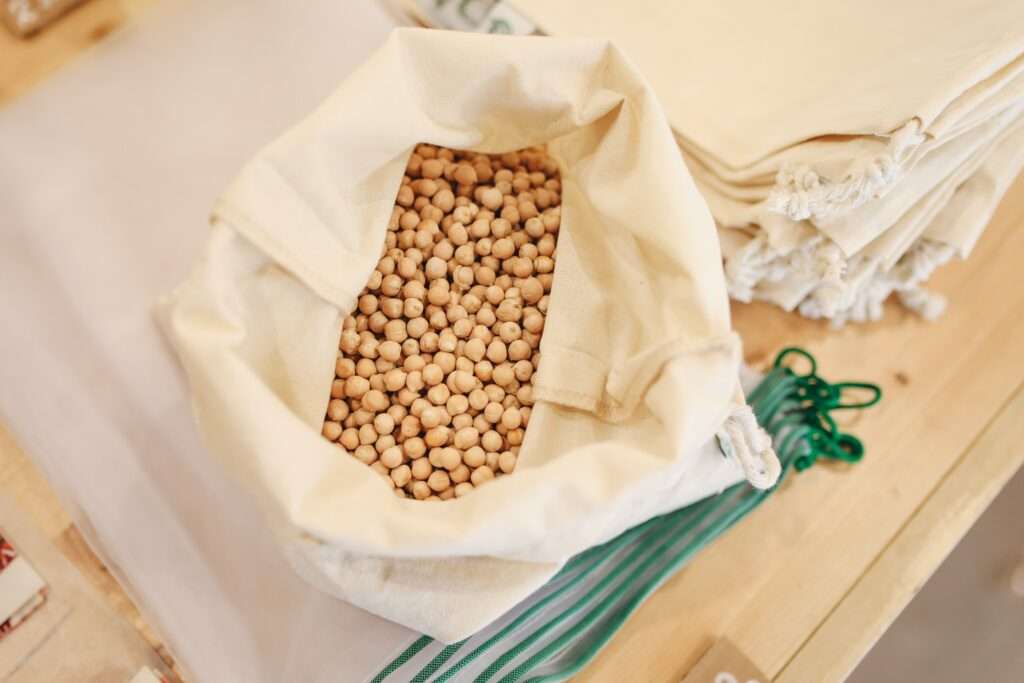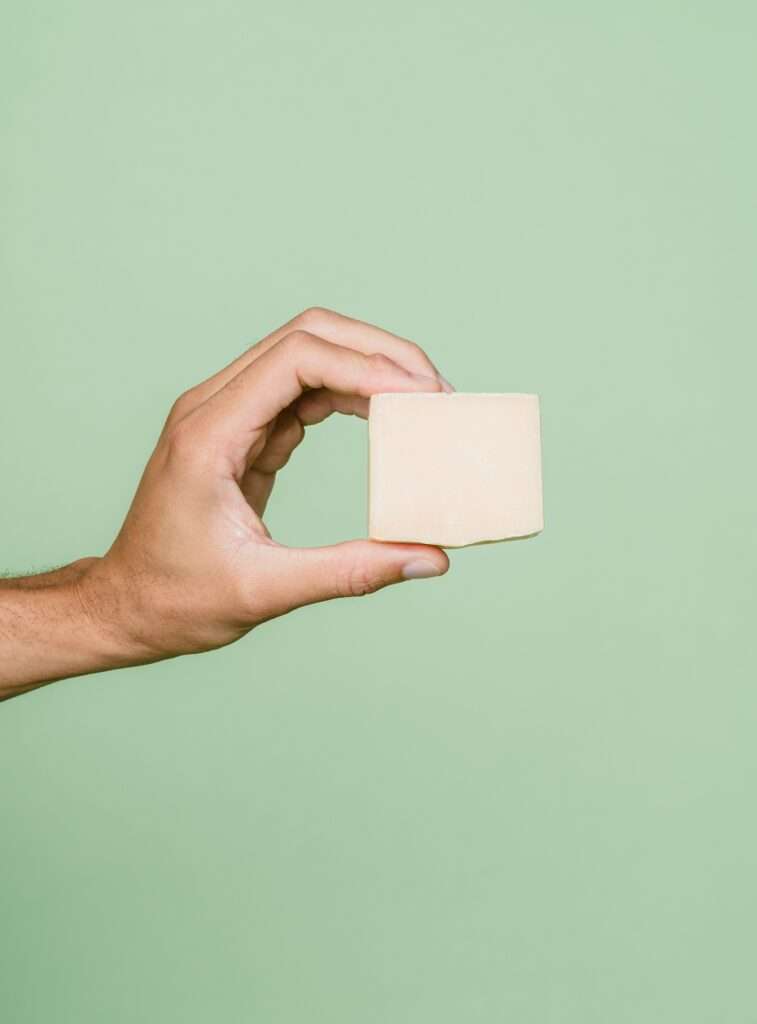Bean curd, with its remarkable versatility and nutritional benefits, can indeed be safely stored overnight with the right techniques
Table of Contents
Introduction
Bean curd, often called tofu, is a cherished ingredient in various cuisines due to its adaptability and rich protein content. However, its perishable nature raises questions about its overnight storage. To address this culinary dilemma, it’s crucial to explore the characteristics of bean curd and the right storage practices.
Understanding Bean Curd
Bean curd is derived from soybeans, imparting a mild flavor that absorbs surrounding tastes. Available in different varieties such as silken, firm, and extra-firm, it can be used in both savory and sweet dishes. Its versatility makes it an attractive addition to any pantry.
can bean curd be kept overnight ?
The question of whether to store bean curd overnight can be daunting. Many wonder if its taste, texture, and safety will be compromised. The answer lies in understanding the factors that influence its preservation.
Factors Influencing Storage
Several factors come into play when deciding to store bean curd overnight:
- Variety: Different types of bean curd have varying moisture levels. Silken tofu tends to be more delicate and perishable, while firmer varieties have a longer shelf life.
- Temperature: The storage temperature significantly impacts the bean curd’s quality. Extreme temperatures can lead to quicker spoilage.
- Packaging: Proper packaging prevents the absorption of strong odors from the fridge and helps maintain the bean curd’s original flavor.
- Air Exposure: Excessive exposure to air can cause the bean curd’s surface to dry out and become unappetizing.
- Seasonings: If the bean curd is marinated or seasoned, it might have a shorter shelf life due to the introduction of bacteria.
Proper Storage Techniques
To ensure the longevity of your bean curd, follow these tips:
Refrigeration is Key
Refrigeration is imperative for extending bean curd’s shelf life. Place the tofu in an airtight container and cover it with water. Change the water daily to prevent it from turning sour.
Optimal Packaging
Store bean curd in its original packaging or wrap it in a damp paper towel and then place it in an airtight container. This minimizes moisture loss and safeguards against the absorption of strong flavors.
Safety Concerns
While bean curd is generally safe to eat after being stored overnight, some concerns must be addressed:
Spoilage and Bacterial Growth
Bean curd can spoil if not stored properly. Signs of spoilage include an off smell, mold growth, or slimy texture. To prevent bacterial growth, ensure it’s refrigerated at the correct temperature.
Texture and Flavor Changes
After overnight storage, bean curd’s texture might change slightly. However, this alteration is often minimal and can be mitigated with proper storage techniques. The flavor, though, can intensify due to seasoning absorption.
Creative Uses for Leftover Bean Curd
Don’t let leftover bean curd go to waste. Here are some creative ideas:
Marinating for Flavor Infusion
Leftover bean curd can be marinated with your favorite sauces and seasonings. Its porous nature allows it to absorb flavors effectively, making it a tasty addition to various dishes.
Incorporating into Breakfast
Add diced bean curd to scrambled eggs or use it as a topping for your morning toast. Its subtle flavor and protein content are a nutritious complement to your breakfast routine.
Frequently Asked Questions (FAQs)
Is it safe to eat bean curd that has turned slightly sour?
It’s generally safe to consume slightly sour bean curd, but trust your senses. If the smell is off or mold is present, it’s best to discard it.
Can I freeze bean curd for longer storage?
Freezing bean curd can alter its texture, making it more suitable for soups or stews. Thawed bean curd might be crumbly, but its flavor remains intact.
How can I tell if bean curd has gone bad?
Look for signs like an unusual odor, mold, or sliminess. A change in color or an off texture also indicates spoilage.
Can I leave packaged bean curd in the fridge as it is?
It’s advisable to transfer packaged bean curd into an airtight container or wrap it in a damp paper towel to maintain its freshness.
What’s the best way to reheat cooked bean curd?
Gently pan-fry or stir-fry the cooked bean curd to regain its original texture and flavor.
Bean curd, with its remarkable versatility and nutritional benefits, can indeed be safely stored overnight with the right techniques. By understanding the variables that impact storage and following proper methods, you can enjoy the convenience of using leftover bean curd without compromising its quality or safety.

LETS DEEP DIVE INTO SOME MORE ASPECTS OF BEAN CURD:
1. The Origins of Bean Curd
Tofu, also known as bean curd, has a rich history dating back over 2,000 years. Its origins can be traced to ancient China during the Han dynasty. Legend has it was discovered accidentally by a Chinese cook who curdled soy milk with nigari, a natural coagulant, resulting in the creation of tofu. From there, it quickly gained popularity and spread to various parts of Asia.
2. The Making of Bean Curd
The process of making tofu is surprisingly simple. It starts with soaking and grinding soybeans to create soy milk. The soy milk is then heated and combined with coagulants like magnesium chloride or calcium sulfate. This coagulation process separates the curds from the whey, which are then pressed into blocks, resulting in the familiar tofu we know.

3. Different Types of Bean Curd
It comes in various forms, each with its own unique texture and culinary uses. The main types include silken tofu, soft tofu, firm tofu, and extra-firm tofu. Silken tofu is smooth and custard-like, perfect for desserts and smoothies. Soft tofu is excellent for soups, while firm and extra-firm tofu are ideal for stir-fries and grilling.
4. Nutritional Benefits of Bean Curd
It is full of all required nutrients. It is an excellent source of protein, making it a valuable alternative for vegetarians and vegans. Additionally, It contains iron, calcium, magnesium, and various vitamins. Moreover, it is low in saturated fats and cholesterol, contributing to heart health.
5. Incorporating Bean Curd into Your Diet
Adding tofu to your diet can be both simple and delicious. Its neutral taste allows it to absorb the flavors of the ingredients it is cooked with. From savory dishes to sweet treats, It can be used in numerous recipes, making it a versatile ingredient that caters to diverse palates.

6. Bean Curd in Asian Cuisine
Asian cuisine boasts an array of delectable tofu dishes. From the famous Mapo Tofu in Sichuan cuisine to the delectable agedashi tofu in Japanese cuisine, each dish showcases the diversity and flexibility of tofu as an ingredient.
7. Bean Curd Recipes: Delicious and Nutritious
Here are two mouthwatering tofu recipes to tantalize your taste buds:
a. Tofu Stir-Fry with Vegetables
Ingredients:
- Firm tofu, cubed
- Assorted vegetables (bell peppers, broccoli, carrots)
- Soy sauce
- Garlic and ginger, minced
- Sesame oil
- Cornstarch slurry
Instructions:
- Take a large bowl, heat sesame oil along with garlic and ginger.
- once heated add pieces of tofu and fry until it gets a light brown colour.
- Toss in the vegetables and cook until tender-crisp.
- Pour in soy sauce and the cornstarch slurry to thicken the sauce.
- Serve hot over steamed rice.
b. Vegan Chocolate Tofu Pudding
Ingredients:
- Silken tofu
- Dark chocolate
- Maple syrup
- Vanilla extract
- Fresh berries for topping
Instructions:
- If you are using dark chocolate, melt it completely and let it cool slightly.
- Blend the silken tofu, melted chocolate, maple syrup, and vanilla extract until smooth.
- Refrigerate for a few hours until set.
- Top with fresh berries before serving.
8. Common Myths About Bean Curd Debunked
It has garnered some misconceptions over the years. Let’s debunk some common myths about this nutritious ingredient and separate fact from fiction.
9. Environmental Impact of Bean Curd Production
It is considered a sustainable food option with a lower environmental impact compared to animal-based proteins. We’ll explore the eco-friendly aspects of tofu production and its positive contributions to the planet.
10. Bean Curd Storage and Shelf Life
To maximize the shelf life and maintain the quality of tofu, proper storage is essential. We’ll provide tips on how to store It correctly to ensure it stays fresh and ready to use.

11. Tofu and Veganism: A Perfect Match
Discover why tofu has become synonymous with vegan and vegetarian diets and how its versatility plays a crucial role in creating plant-based dishes that are both satisfying and nutritious.
12. Tofu’s Contribution to Heart Health
Studies have shown that incorporating tofu into your diet can have positive effects on heart health. We’ll explore the various components of tofu that contribute to cardiovascular well-being.
13. Tofu Skincare: Myths and Realities
With its silky texture and nutrient-rich composition, tofu has found its way into the beauty industry. We’ll examine the truth behind tofu-based skincare products and their potential benefits.
14. Tofu: The Sustainable Protein Source
As the demand for sustainable protein sources increases, tofu emerges as a viable option. We’ll delve into the environmental advantages of tofu as a protein-rich, planet-friendly alternative.

15. Conclusion
In conclusion, bean curd, or tofu, is a versatile and nutritious ingredient with a long history and a promising future. Its ability to adapt to various flavors and cooking styles makes it a staple in numerous cuisines worldwide. Whether you’re a seasoned tofu enthusiast or new to this delightful food, experimenting with tofu in your kitchen can lead to endless culinary possibilities.
FAQs:
Is tofu suitable for those with soy allergies?
While tofu is made from soybeans, the production process removes most of the allergenic compounds. However, it’s always best to consult with a healthcare professional if you have concerns about soy allergies
What is bean curd?
Bean curd, also known as tofu, is a popular and versatile soy-based food originating from China. It is made by coagulating soy milk and pressing the resulting curds into blocks.
Is tofu suitable for vegans and vegetarians?
Yes, tofu is an excellent plant-based protein source, making it a perfect choice for vegans and vegetarians.
What are the different types of tofu available?
Tofu comes in various types, including silken tofu, soft tofu, firm tofu, and extra-firm tofu, each varying in texture and culinary uses.
Is tofu gluten-free?
Yes, tofu is naturally gluten-free, making it a safe option for individuals with gluten sensitivity or celiac disease.
How can I incorporate tofu into my diet?
Tofu is incredibly versatile and can be used in a wide range of dishes, such as stir-fries, soups, salads, desserts, smoothies, and more.
Does tofu have a taste on its own?
Tofu has a mild and neutral flavor, which allows it to absorb the flavors of the ingredients it is cooked with, making it a great addition to various dishes.
What are the nutritional benefits of tofu?
Tofu is a nutrient-rich food, containing high-quality protein, essential amino acids, iron, calcium, magnesium, and various vitamins.
Is tofu beneficial for heart health?
Studies suggest that tofu can contribute to heart health due to its low saturated fat content and presence of soy isoflavones, which may have positive effects on cholesterol levels.
Can I freeze tofu?
Yes, you can freeze tofu to extend its shelf life. Freezing changes its texture, giving it a firmer, chewier consistency.
Is it necessary to press tofu before cooking?
Pressing tofu can enhance its texture and allow it to absorb flavors better, but it is not always necessary, especially for softer tofu varieties used in smoothies and desserts.
Are there any soy allergies associated with tofu consumption?
While tofu is made from soybeans, the coagulation process reduces most of the allergenic compounds. However, individuals with soy allergies should exercise caution and seek advice from a healthcare professional.
How can I make tofu dishes more flavorful?
Tofu can be marinated before cooking to infuse it with flavors. Using aromatic spices, herbs, and savory sauces can also enhance its taste.
Can I use tofu as a meat substitute in recipes?
Absolutely! Tofu works well as a meat substitute in various dishes, offering a similar texture and the ability to absorb flavors.
Is tofu environmentally friendly?
Compared to animal-based proteins, tofu production has a lower environmental impact, making it a sustainable protein source.
Can I use tofu in desserts?
Yes, silken tofu can be used in desserts like puddings, cheesecakes, and smoothies, adding a creamy and nutritious component to the treats.
Remember that tofu is a versatile ingredient, and experimenting with different cooking methods and flavor combinations can lead to delightful culinary experiences. Whether you’re a tofu enthusiast or new to this nutritious food, there are countless ways to enjoy its benefits in your daily meals.
for more information you can also read : wikipedia
you can also read : Water Bottles





